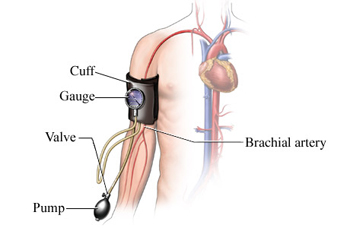June 30, 2008
Taming Hypertension–Conventional And Unconventional Wisdom

By Michael D. Shaw
With increased longevity can come more health problems, of course, as we baby boomers are quite aware. One of the more sobering findings to come out of the Framingham Heart Study (in 2002) was that the residual lifetime risks for developing hypertension and stage 1 high blood pressure or higher (greater-than-or-equal to 140/90 mmHg regardless of treatment) were 90% in both 55- and 65-year-old participants.
Recent statistics indicate that of the 50 million Americans who have high blood pressure, perhaps half are being treated, and about one third are unaware that they have the condition. Still, tens of billions of dollars are spent each year on anti-hypertensive drugs—a class of pharmaceuticals that is not extremely popular.
Why are they unpopular? Various studies indicate that they may not be terribly effective, and if good control is to be established, more than one drug is usually required. Side effects are frequent, including impotence, which one study pegs in 40% of male users of these drugs. Given the easy availability of erectile dysfunction drugs, though, this may not be a problem for some. Yet, it does plunge the user into the dicey arena of one drug taken to mitigate the side effects of another.
There are four classes of anti-hypertensive drugs: diuretics, beta blockers, ACE inhibitors, and calcium channel blockers. Which drug to prescribe initially is by no means a simple decision, as the literature is chock full of contradictory information, and this is exacerbated by how the drugs would affect other conditions in the patient.
To add to the confusion, much of the conventional wisdom on hypertension was attacked in a rather amazing article entitled “There is a non-linear relationship between mortality and blood pressure,” that appeared in 2000 in the European Heart Journal. Written by two cardiologists and a math/statistics guru from UCLA, the paper notes that:
No randomized trial has ever demonstrated any reduction of the risk of either overall or cardiovascular death by reducing systolic blood pressure from our thresholds to below 140 mmHg.
The authors also point out that:
Our findings in no way challenge the conclusion that anti-hypertensive drugs can have pronounced benefits. However, they certainly show that the administration of these drugs, based solely on the fact that a person’s systolic blood pressure exceeds 140 mmHg, cannot be justified.
They argue that the hard “cut point” of 140 should be mitigated with consideration of the person’s age and sex.
Fair enough. That takes some of the pressure off (pun intended), but be sure to consult with your health care professional, since this flies in the face of the so-called JNC 7 clinical practice guidelines. (Joint National Committee on Prevention, Detection, Evaluation, and Treatment of High Blood Pressure.)
Now, let’s take a look at few non-pharmaceutical therapies.
Diet
The National Institutes of Health’s DASH (Dietary Approaches to Stop Hypertension) eating plan is low in saturated fat and high in complex carbohydrates. Sodium is reduced to 2300 mg per day, with better results achieved by dropping to 1500 mg per day. Potassium should be increased to 4700 mg per day, with magnesium put at 500 mg/day. Download their helpful 64-page guidebook.
Many authorities believe that magnesium is extremely important. One finding from the Honolulu Heart Study was that magnesium intake correlated better with reducing blood pressure than the other 59 metabolites studied. If you’re going to supplement this mineral, break the doses down into 200-300 mg hits, as more than that at one time can cause diarrhea in some individuals.
Nitric oxide/Arginine
Nitric oxide dilates arteries, and affects blood pressure. One 2004 study named decline in nitric oxide production a major cause of hypertension. The amino acid arginine is a precursor to nitric oxide, and several studies have shown benefits of supplementing this compound.
Vitamins
Vitamins C, D, E, and B6 have all been implicated in lowering blood pressure
Botanicals
- Hawthorn—traditional hypotensive; can take a few weeks to achieve optimal results
- Arjuna bark—Ayurvedic hypotensive
- Yarrow—shown to reduce blood pressure and serum lipids
- Garlic—effective against hypertension and other cardiovascular risk factors. Studies cite a daily dose of 2400 mg.
Finally, if you think you are hypertensive, or have been diagnosed as such, it is a very good idea to purchase a blood pressure monitor, and take your own readings at home. Often, via the phenomenon of “white coat hypertension,” patients will show elevated blood pressure simply by being in a doctor’s office. As such, many practitioners advise their patients to bring their units into the office with them, and take their own readings right there, to compare to the doc’s equipment.
Best of luck in taming hypertension!

